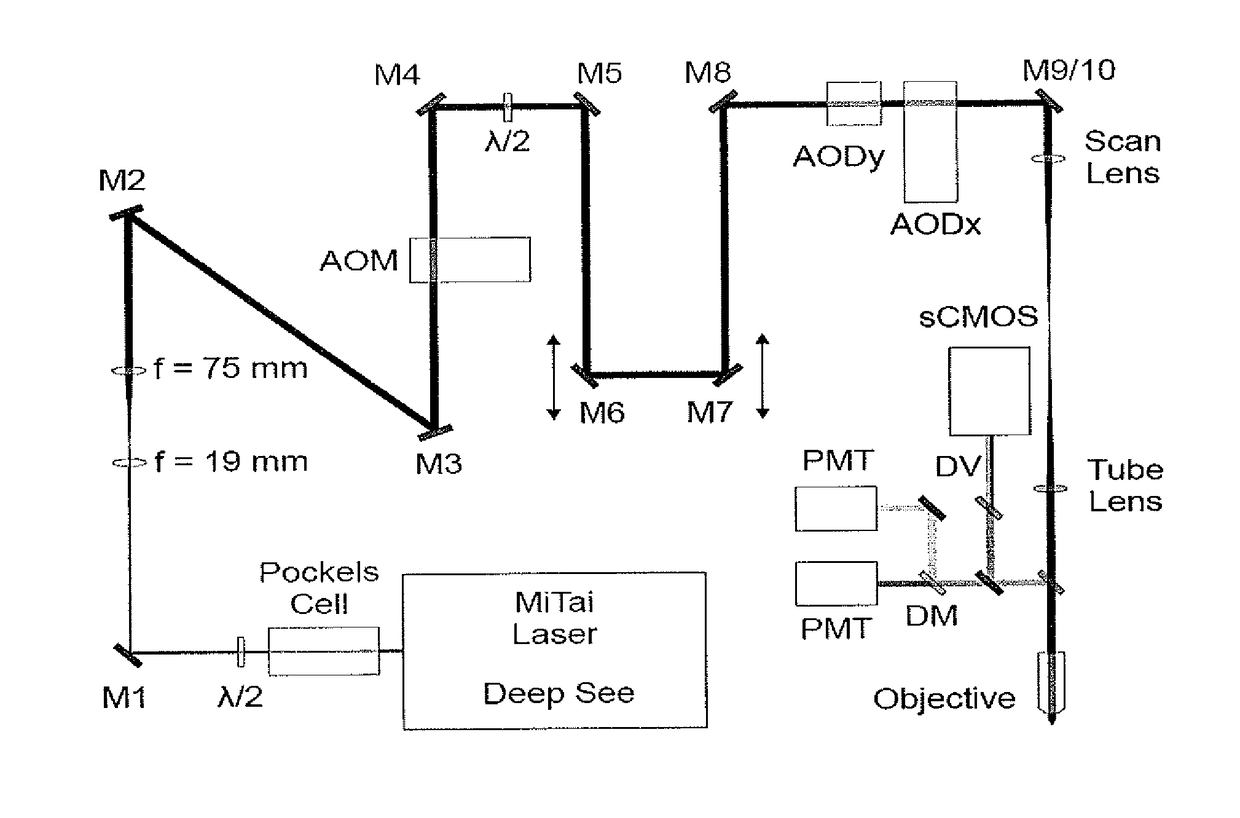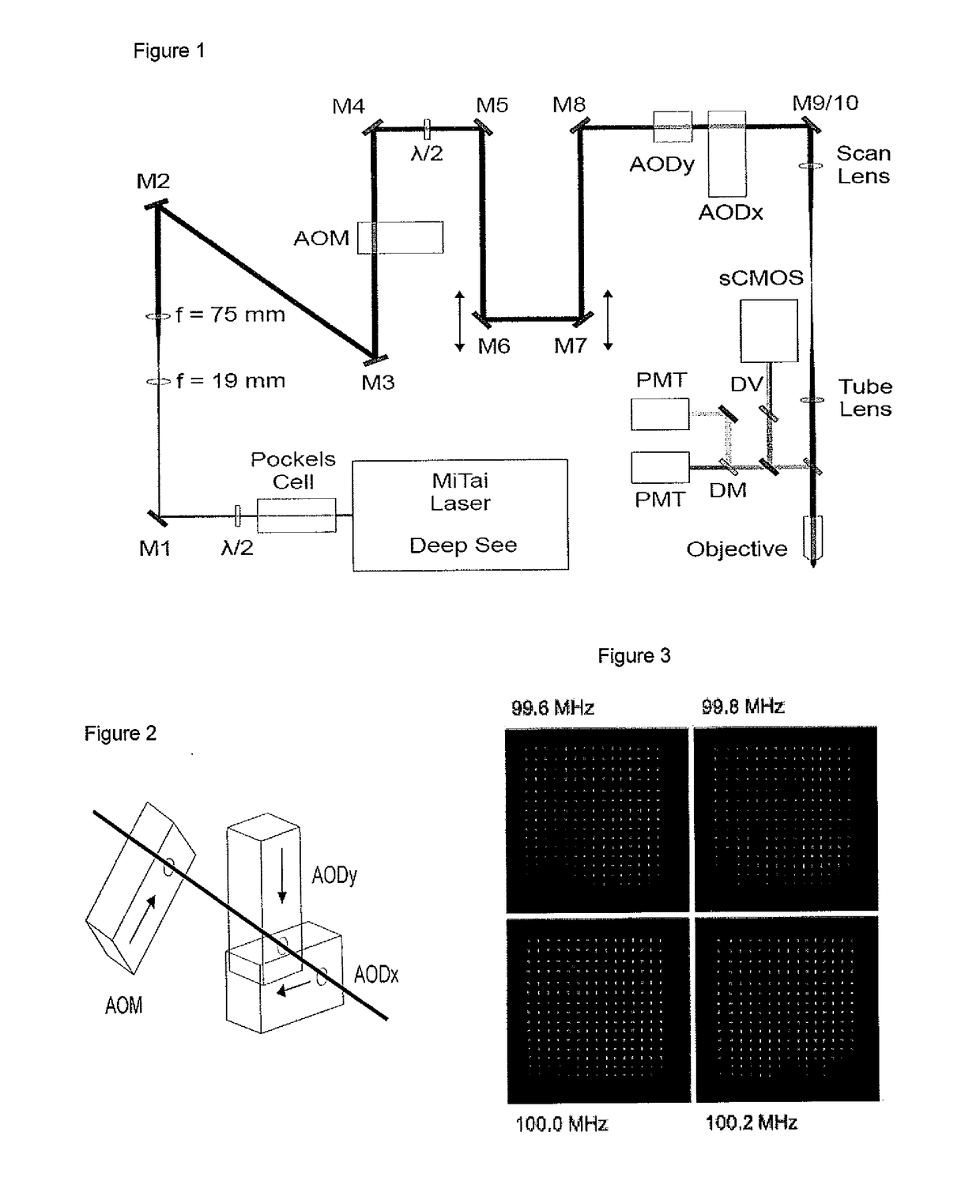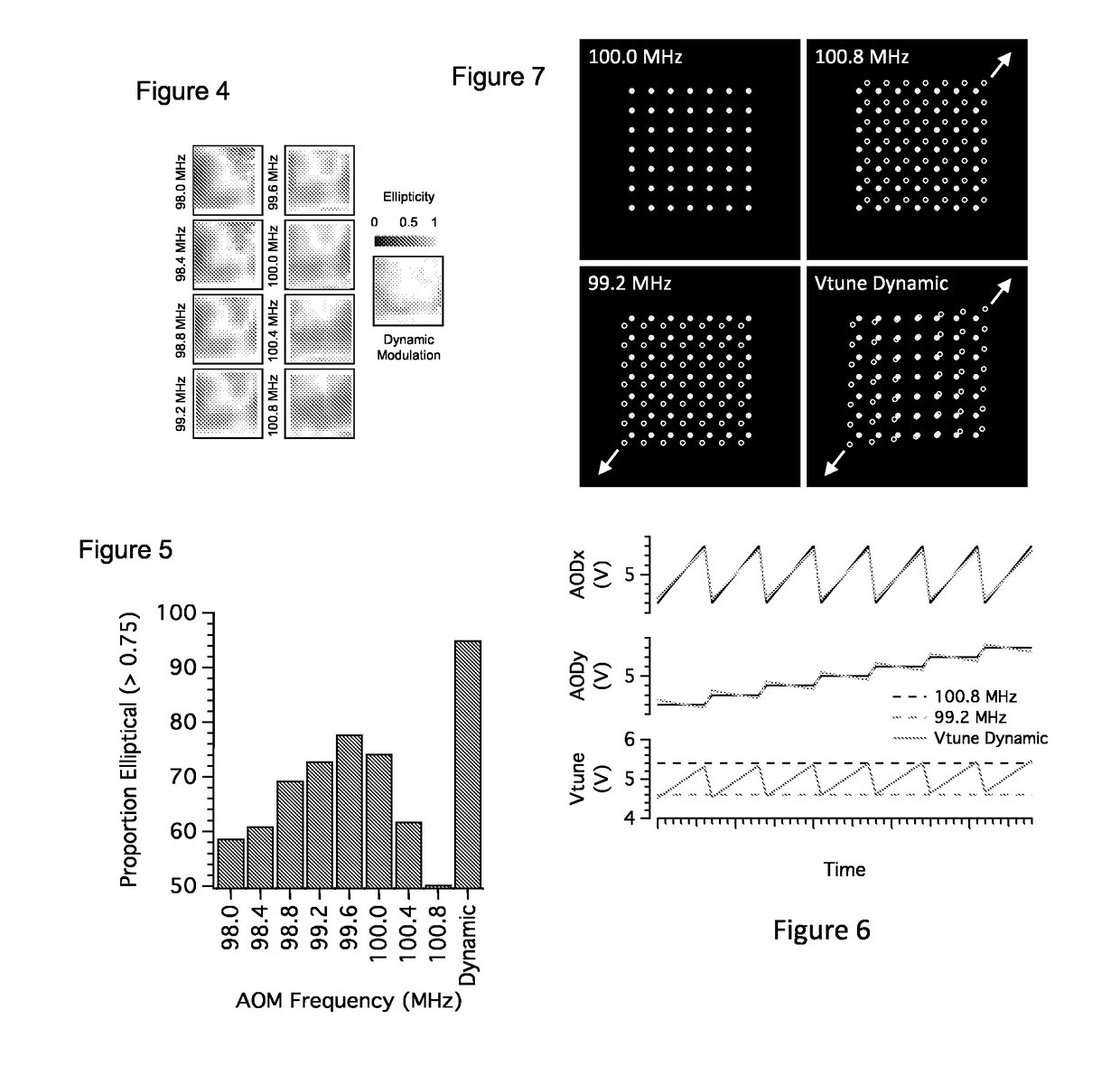Improvements in or relating to structured illumination microscopy utilising acousto-optic deflectors
a technology of acousto-optic deflectors and structured illumination, applied in the field of superresolution microscopy, can solve the problems of significant temporal and spatial dispersion, reduce efficiency and resolution, and the aods have not been widely adopted, so as to reduce the variation across the illumination area, reduce the distortion of the spatial profile of the beam, and increase the displacement range.
- Summary
- Abstract
- Description
- Claims
- Application Information
AI Technical Summary
Benefits of technology
Problems solved by technology
Method used
Image
Examples
Embodiment Construction
[0022]In order that the invention may be more clearly understood an embodiment / embodiments thereof will now be described, by way of example only, with reference to the accompanying drawings, of which:
[0023]FIG. 1 shows a schematic illustration of an apparatus for structured illumination microscopy (SIM) according to the present invention;
[0024]FIG. 2 is an expanded schematic illustration of the relative orientation of the AOM and the AODs in FIG. 1;
[0025]FIG. 3 illustrates the compensation of spatial dispersion of the beam resulting from applying an acoustic compensation signal at various constant frequencies over a grid of illumination points;
[0026]FIG. 4 illustrates the ellipticity of the beam at each illumination point over the full field of view resulting from applying an acoustic compensation signal at various constant frequencies over a grid of illumination points compared with using dynamic modulation of the an acoustic compensation signal frequency;
[0027]FIG. 5 illustrates t...
PUM
| Property | Measurement | Unit |
|---|---|---|
| frequency | aaaaa | aaaaa |
| frequency | aaaaa | aaaaa |
| frequency | aaaaa | aaaaa |
Abstract
Description
Claims
Application Information
 Login to View More
Login to View More - R&D
- Intellectual Property
- Life Sciences
- Materials
- Tech Scout
- Unparalleled Data Quality
- Higher Quality Content
- 60% Fewer Hallucinations
Browse by: Latest US Patents, China's latest patents, Technical Efficacy Thesaurus, Application Domain, Technology Topic, Popular Technical Reports.
© 2025 PatSnap. All rights reserved.Legal|Privacy policy|Modern Slavery Act Transparency Statement|Sitemap|About US| Contact US: help@patsnap.com



